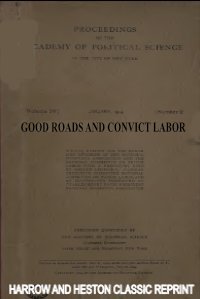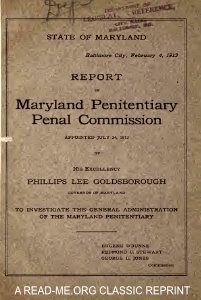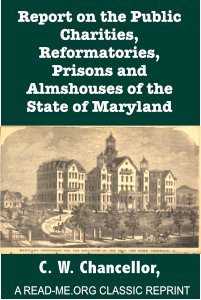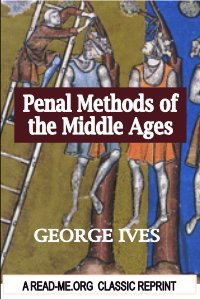Edited by Clare Anderson.
Between 1415, when the Portuguese first used convicts for colonization purposes in the North African enclave of Ceuta, to the 1960s and the dissolution of Stalin’s gulags, global powers including the Spanish, Dutch, Portuguese, British, Russians, Chinese and Japanese transported millions of convicts to forts, penal settlements and penal colonies all over the world. A Global History of Convicts and Penal Colonies builds on specific regional archives and literatures to write the first global history of penal transportation. The essays explore the idea of penal transportation as an engine of global change, in which political repression and forced labour combined to produce long-term impacts on economy, society and identity. They investigate the varied and interconnected routes convicts took to penal sites across the world, and the relationship of these convict flows to other forms of punishment, unfree labour, military service and indigenous incarceration. They also explore the lived worlds of convicts, including work, culture, religion and intimacy, and convict experience and agency.
Bloomsbury Academic (2018) 406 pages.
By Sarah Tarlow.
”The story of Tom Otter, a murderer who was executed and gibbeted in 1806, has many striking features. Not least, this form of brutal and bodily post-mortem punishment seems rather anachronistic during a period often described in terms of increasing gentility and humanity. It took place within the legal context of the Murder Act (1752), which specified that the bodies of murderers had to be either dissected or hung in chains. Other aggravated death penalties were applied to those convicted of treason and suicide. A number of common misconceptions about the gibbet need to be corrected.” Palgrave (2017) 163p.
By Graeme R. Newman.
This is a classic reprint of the original edition of The Punishment Response, originally published in 1976. An acclaimed treatise on the history, philosophy and psychology of punishment. "...read with enormous appreciation for its erudition and method of analysis..." -- Michel Foucault.
Harrow and Heston Classic Reprint. 1985.312p.
By Dorothea Lynde Dix.
“ Society, during the last hundred years, has been alternately perplexed and encouraged, defeated and successful, respecting the two great questions— how shall the criminal and pauper be disposed of, in order to reduce crime and reform the criminal on the one hand, and, on the other, to diminish pauperism and restore the pauper to useful citizenship 1 Though progress has been made, through the efforts of energetic and enlightened persons, directed to the attainment of these ends, all know that society is very far from realizing their accomplishment. We accord earnest and grateful praise to those who have procured the benefits at present possessed ; and, with careful zeal, we would endeavor to advance a work, which succeeding generations must toil to perfect and complete. Moralists and philosophers, with pietists and philanthropists, have urged upon "communities the truer course of employing early preventive measures, rather than expend the energies, at a late period, in futile attempts to govern and lead by correct and virtuous habits, the long-time criminal, and the life-long indolent and ignorant
Boston : Printed by Munroe & Francis, 1845. 108p.
By C. W. Chancellor.
Excerpt from Report on the Public Charities, Reformatories, Prisons and Almshouses of the State of Maryland, by C. W. Chancellor, M.D., Secretary of the State Board of Health, Made to His Excellency, John Lee Carroll, Governor, July, 1877, by C.W. Williams, and the Maryland State Board of Health.
Frederick, MD: Baughman Brothers, 1877. 208p.
By Mary Carpenter.
“The English and the Irish Convict Systems -were both founded on the Act of Parliament of 1853. The object of that Act ^vaa to make such changes in the system adopted towards Convicts, as would prepare them for discharge in oiu' own country, since our Colonial provinces were virtually closed against them, "Western Australia only consenting still to receive a small number annually. "We have seen that in England the system has hitherto been a failure, but have traced that failure, not to the principles on which that and the subsequent one of 1857 were founded, but to certain omissions and additions which were incompatible with the successful working of the principles. We now proceed to the examination of the Irish Convict System, which has fully developed the principles of both those Acts. The results of the ten years during which it has been in operation demonstrate, beyond any possibility of doubt to an impartial observer, not only the truth of tlio principles embodied in the Acts of Parliament, but also of those moral principles which are so embodied in it as to constitute its peculiar features, and of the excellence of the machinery by which these are brought into action. The wonderful combinations of all these by the founder of the system,Sir Walter Crofton, demands from us very close investigation of its principles, and examination of its details.
London: Longman, 1864. vol. 2. 389p.
Introduction by Charles Tibbits.
“ The name of London's famous and terrible prison Newgate has for centuries conjured to the public mind the gloomiest picture that the imagination of the listener could conceive of human retribution on the criminal and depraved. What the name of theBastille was in France to the person who might find himself at variance with political powers the name of Newgate was to the person who bore in himself the consciousness of crime. Its terrible reputation as the place of vengeance on offenders against theLaws seems to have a remarkable antiquity. Which prison was first instituted there is no record. As early as 121 1 however we have the news of its dungeons being filled with offenders. In I334..a commission was appointed by the authorities to consider the tortures then in use to extort confessions from the unfortunate wretches within its grim hold. From one end of the country to the;other Newgate became known as a place where all the terrors of the Law awaited the guilty. Dipping Into its gloomy annals one cannot help also arriving at the conviction that its terrors were not wholly reserved for the guilty. They overtook the unfortunate innocent sometimes. The inscription on the old Edinborough Tolbooth would excellently apply to it-—even as it will apply to many of our prisons to-day.”
London: Sisley's, 1908. 327p.
A Symposium by Julia Kippen Jaffray and George Gordon Battle.
Contents: I. The prisoner and the courts / by William H. Wadhams -- II. The prisoner himself. Part I. / by Bernard H. Glueck. Part II / by Thomas W. Salmon -- III. The prisoner--ward or slave? / by Karl W. Kirchwey -- IV. The control over the prisoner. Part I. Federal / by George Gordon Battle. Part II. State / by E. Stagg Whitin -- V. Self-government by the prisoner. Part I. Self-government in a state prison / by Thomas Mott Osborne. Part II. Self-government in a reformatory / by E. Kent Hubbard -- VI. The prison officer / by Frederick A. Dorner -- VII. Industrial training for the prisoner / by Arthur D. Dean -- VIII. The prisoner in the road camp / by Charles Henry Davis -- IX. The union man and the prisoner / by Collis Lovely -- X. The man who comes out of prison / by R.J. Caldwell -- XI. The community center and the delinquent / by John Collier. Boston:
Little, Brown, 1917. 250p.
By the Rev. Clifford Rickards.
“In writing the following reminiscences of my twenty-five years' experiences in the Prison on Dartmoor I have had two objects in view first, to interest my readers and excite their sympathy for a class of men who, although they are criminals, are not without their good points, as some of them have recently shown by their conduct in the late war.”
London: Edward Arnold. (1920) 246 pages.
By Kent F. Schull.
Microcosms Of Modernity. “While researching in the Imperial Ottoman Archives in Istanbul I found a treasure trove of untapped documents related to penal institutions and prison reform in the late Ottoman Empire. I quickly realised how integral criminal justice reforms, including prisons, were to Ottoman plans to restructure the empire comprehensively. I also recognised that prisons were intrinsic to many facets of Ottoman modernity and nation-state construction during the nineteenth and the early twentieth centuries….Similar to Foucault’s assessment of French prisons, I argue that various late Ottoman administrations utilised prisons as important instruments of social control and discipline.”
Edinburgh University Press (2014) 241p.
By Karl Nitsche, and Paul & Wilmanns.
This work brings the reader to the present-day view-points with reference to the prison psychoses through the medium of a historical review of their development in the German literature. Such a work should be welcomed by all who are interested in the problems of psychopathology and particularly those who long for more rationalistic methods of dealing with the criminal and with all of the problems of criminology. Nervous and Mental Disease Monograph Series No. 13 .
Journal of Nervous and Mental Disease (1912) 104 pages.
By Really McBride.
“The primary purpose of this text is to look at punishment as a central problem of political order. Sociologists, legal scholars, and criminologists study penal regimes: the discipline of political science, with notable exceptions, has ceded this ground. 1 This is a terrible mistake: as I will demonstrate, punishment is both a uniquely revealing lens into how political regimes work as well as a central problem for political administration that requires careful negotiation of the stated ideals of a polity in the exercise of power.”
University of Michigan Press (2007) 205p.
Edited by Elisabeth Fransson, Francesca Giofrè and Berit Johnsen.
“My cell is as large as a student’s small room: I would say that roughly it measures three by four and a half meters and three and a half meters in height. The window looks out on the courtyard where we exercise: of course it is not a regular window; it is a so-called wolf’s maw with bars on the inside; only a slice of sky is visible and it is impossible to look into the courtyard or to the side.”
Creative Commons (2018) 349p.
By George Ives.
Criminals, Witches, Lunatics Prisons as places of detention are very ancient institutions. As soon as men had learned the way to build, i. n stone, as in Egypt, or with bricks, as in Mesopotamia, when kings had many- towered fortresses, and the great barons castles on the crags, there would be cells and dungeons in the citadels. But prisons as places for the reception of ‘‘ordinary (as distinct from state or political) criminals for definite terms only evolved in England many centuries afterwards…
Read-Me.Org Classic Reprint. Private circulation (1910) 188p.
By A. Merchant.
Edited by Frank Henderson. “To a kind and devoted brother, who cheered me with words of Christian sympathy and brotherly love during the darkest and most desolate hours of my past unhappy career, the following pages are affectionately inscribed by the author.”
Richard Bentley et al. publishers to her Majesty (1869) 259 pages.





















